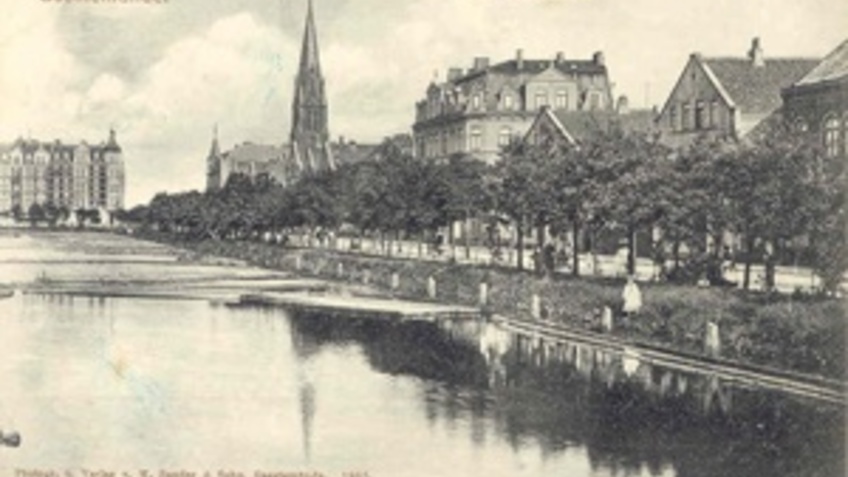Timber Port (Holzhafen)
In the second half of the 19th century, a tremendous boom in the building industry was also being experienced in the Lower Weser region. This led to the construction of the Timber Port (Holzhafen). The Geestemünde hydraulics engineer Theodor Hoebel (1832-1908), who was later responsible for the first basin in the fisheries port (Fischereihafen I, 1896), drew up the design for a basin of 36,000 square metres (including the edges) and a depth of 1.20 metres. A narrow channel linked the basin with the other Geestemünde basins. The dimensions already indicate that a navigable basin was not initially intended, but a basin for timber rafting and storage. The basin was inaugurated on May 25th 1877. After removal of customs barriers in 1888, some wood processing plants set up in the vicinity of the basin.
The area gradually changed into a residential area before the First World War, and the processing firms left one by one. The last plant to leave, Chr. Külken (situated there since 1891), burned down on May 23rd 1934 and was rebuilt at another place. The basin itself was reduced by about 2/3 of its extension from 1937 to 1938 and now had a more decorative function. Heavy bombing destroyed large parts of the surroundings on September 18th 1944. The basin today no longer shows any signs of its original purpose.


